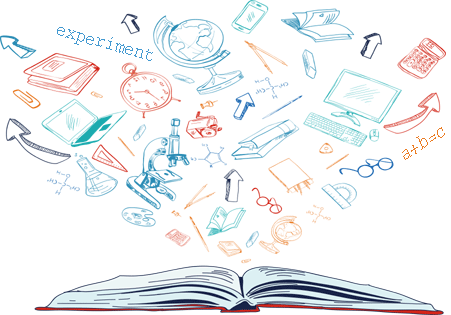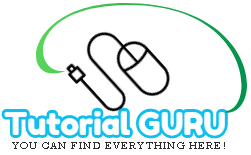PGDCA COURSE DETAILS
Post Graduate Diploma in Computer Applications
PGDCA, Post Graduate Diploma in Computer Applications is a professional course. it covers in depth knowledge of fundamental knowledge of computer, operating systems, computational techniques, file & data structure and the core principles of programming.
PGDCA programme is especially designed to enable the students to pursue a successful career in the field of IT

UNIT I
Operating System (Windows 8.1)
- Overview of Windows Operating System
Basic Operations-
- How to start a computer, login
- How to logoff, hibernate, shutdown etc
- Personalizing Desktop- Desktop Background, Icon, Screen Saver, Themes
- Setting date & time
- Task bar
- Files & Folders – Create, Copy, Rename, Moving & Delete
- Create & Using Shortcuts
- Recycle Bin.
- Accessories –
- MS Paint
- Notepad
- WordPad
- Windows Media Player
- Calculator
- Games
- Math Input Panel
- Language Settings – How to set other languages on computer
- Using Control Panel –
- How to Install Program in Windows 8.1
- How to uninstall Program
- How to Install and Uninstall Fonts in Windows 8.1
- Enhance the performance of computer
- Using Disk Clean-up
- Using Disk Derangement
- Using Windows Update
- Protecting your computer against viruses
Using Internet in Windows: Basic Operations using Internet Browser-
- Working with browsers
- Know about WWW
- URL
- Search Engines
- Searching information on Wikipedia
- Subscribing and reading newspapers online
- Typing text in the regional language
- Using Google Maps
- Working with Google Apps
- Online Ticket Booking
- Apply for PAN Card /
- How to apply for online Passport
- How to Apply for online Aadhar Card
- Pay electricity bill
- How to pay service tax online
- Booking gas refill online
- Downloading Ebooks
UNIT II
- Modern office activities and their software requirements
- Introduction to Office Automation Suit
- Elements of office suit & area of use
- Word-processing
- Spreadsheet
- Presentation graphics
- Database
- Introduction and comparison of various office suites like Apache OpenOffice, Libre Office, Calligra Suite, WPS office, KOffice
- Google Docs
MS Word Basics:
- Introduction to MS Office (2013)
- Introduction to MS Word
- Features & area of use
- Various versions of MS Office and their requirements
- Working with MS Word
- Menus & Commands
- Customize the Ribbon
- Toolbars & Buttons
- Shortcut Menus
- Wizards & Templates
- Creating a New Document
- Different Page layouts
- Different Page View
- Applying various Text Enhancements- Fonts, Styles, Text Attributes
Formatting Your Text and Documents:
- Auto format
- Paragraph Formatting
- Page Formatting
- Line spacing
- Margins
- Borders and Shading
- Tabs
- Indents
- Text Editing using various features
- Bullets and Numbering
- Working with Styles
- How to add a Style in text
- How to remove style in Gallery
- How to Create a New Style
- How to Modify a Style
- Printing & various print options
- Working with Headers and Footers
- How to Add Header and footer
- How to add a image in header and footer
- How to ad a Page Number in Header and Footer
- How to remove Header and footer
- Tables:
- Creating a simple table, Creating a table using the table menu
- Entering and editing text in a table.
- selecting in table, adding rows, changing row heights, Deleting rows, Inserting columns, Deleting columns, changing column width
- conversion to and from text.
UNIT III
- Advanced Features of MS Word :
- Spell Check
- Thesaurus
- Find & Replace
- Auto texts
- Auto Correct
- Symbols
- Working with Columns
- Tabs
- Indents
- Margins & Space management in Document
- Column
- Section Breaks
- Adding References
- Using footnote and endnote in documents
- creating automatic Table of Contents.
- Using Themes
- Watermarks
- inserting Equations & Symbols
Graphics:
- Importing graphics and insert picture
- Using Clip Art
- Working with Shapes
- Smart Art in documents
- using drawing features
- drawing objects
- text in drawing.
- Taking and inserting Screen shots in Documents
- Using Word Art
- Drop Cap features in documents
Templates:
- Template types
- using templates
- exploring templates
- modifying template
Mail Merge:
- Mail Merge in MS Word
- Mail Merge concept
- Envelops
- Mailing Labels
- Importing data
- exporting to and from various formats.
Macros in MS Word:
- Macro introduction and their use
- recording macros
- Editing macros
- running a macro.
UNIT IV
MS Excel:
- MS Excel Spreadsheet Basics & features
- Concepts of Workbook & Worksheets
- Getting started
- Creating a new worksheet
- Using Wizards
- Various Data Types
- Selecting cells
- Entering and editing text
- Entering and editing Numbers
- Removing & Resizing of Columns & Rows
- Entering and Editing Formulas
- Referencing cells
- moving cells, copying cells
- sorting cell data
- inserting rows, inserting columns
- Inserting cells
- deleting parts of a worksheet
- clearing parts of a worksheet
- different view of worksheets.
Formatting:
- Page setup
- Cell Formatting
- changing column widths and Row heights
- Auto format
- changing font sizes and Attributes
- Centering text across columns
- using border buttons and Commands, changing colors and shading
- hiding rows and columns
- Working with Data & Ranges
- Column Freezing
- Labels
- Hiding
- Splitting
Merge Cells
Charts:
- Chart parts and terminology
- chart wizard
- different types of charts
- printing charts
- deleting charts
- linking in spreadsheet
- Printing of Workbook & Worksheets with various options.
UNIT V
MS PowerPoint:
- Introduction & area of use
- Working with MS PowerPoint
- Creating a New Presentation
- Working with Presentation
- Using Wizards
- Slides & its different views
- Inserting, Deleting and Copying of Slides
- Working with Notes
- Handouts
- Columns
- Lists
- Adding Graphics
- shapes
- screenshots
- SmartArt
- Charts in presentation
- Sounds and Movies to a Slide
- Working with PowerPoint Objects Designing
- Presentation of a Slide Show
- change Slide backgrounds
- Change Slide Size
- Using Animation
- Transitions in presentation
- Advanced Slide options Manual & Automatic
- Printing Presentations, Notes, Handouts with print options
- Slide Master
- Handout Master
- Notes Master.
Outlook Express:
- Features and uses
- Configuration and using Outlook Express for accessing emails in office
- How to Add e-mail accounts to Outlook
- How to set up an Internet email account in Outlook 2013
- How to Manual set up an Internet email account in Outlook 2013
- Create emails
- send and receive emails in outlook.
UNIT – I
- Computer System Concepts
- Application area of Computer
- Advantage of Computer
- Disadvantage of Computer
- Components of a computer system
- Generations of computers
- Configurations of Computer system
- Types of PCs
- Primary Vs Secondary Memory
- RAM, ROM, EPROM, PROM.
- Various Storage Devices
UNIT – II
- Input Devices
- Output Devices
- Monitors
- Video Standard
- Printers and its Types
- Plotter
- 3D Printers
- Sound Card and Speakers
UNIT – III
- Software and Its Need
- Types of Software –
- System Software
- Application Software
- Utility Software
- Introduction & Features of DOS
- Introduction to Windows
- Programming Languages
- Uses of Assemblers, Compilers and Interpreter
- Application Software and its Types –
- Word Processing
- Spreadsheet
- Presentation Graphics
- Data Base Management
- Desktop Publishing
- Communication
- Educational
- Graphics & Multimedia
- Business Accounting
- MIS, Gaming and ERP Software etc
- Computer coding system
- Number system of computer
- Binary, Octal, Decimal, Hexadecimal
- How to Change Binary to Decimal
- How to Change Hexadecimal to Decimal
UNIT – IV
- Use of communication and IT Communication Process
- Component of communication
- Communication types
- Communication Channels
- client/ server and peer-to-peer networks
- Types of connections
- Types or Network- LAN, WAN , MAN
- What is VPN
- Topologies of LAN – Ring, Bus, Star, Mesh and Tree topologies structure, uses, advantage & disadvantages
- components of LAN – Media, NIC, NOS
- Network devices – Bridges, HUB, Routers, Repeater, Gateways uses, advantages & disadvantages.
UNIT – V
- Disk Operating System (DOS): Introduction)
- DOS Basics –
- Drive Name
- FAT
- File and Directory Structure
- File Naming Rules
- Booting Process
- DOS System Files
- DOS Commands: Internal – DIR, MD, CD, RD, COPY, COPY CON, DEL, REN. External TREE, FORMAT, SORT, FDISK, MODE, ATIIRIB, HELP, SYS etc.,
- Concepts of Free/Open Source and proprietary software
- Applications and use of computer in various fields
- LINUX :
- History of Linux
- Features of Linux
- Hardware Requirements of Linux
- Various flavors of Linux
- Linux Standard Directories
- Functions of Profile and Login Files in Linux
- Linux Kernel
- Login and Logout from Linux System
- Linux commands – be, cal, cat, cd, clear, cmp, cp, mv, date, find, ls, pwd, mkdir, more, rm, rmdir, chgrp, chmod, who, whois
You Can Download PDF file hear it free.
 Tutorial Guru All Type of Tutorial Available Here
Tutorial Guru All Type of Tutorial Available Here